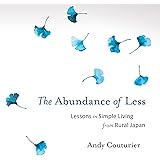Are you envisioning a refresh for your outdoor space, eager to transform it into a modern oasis? The video above offers a wonderful visual journey through contemporary garden aesthetics, providing rich inspiration. As you watch, consider how the principles of modern design can elevate your own backyard, patio, or green sanctuary. These current modern garden design trends prioritize functionality, sustainability, and sophisticated simplicity, making them perfect for today’s busy lifestyles.
Embracing Modern Garden Design Trends
Modern garden design is more than just a fleeting fad; it represents a thoughtful approach to outdoor living. It shifts focus from purely ornamental displays to creating harmonious, usable spaces that blend seamlessly with contemporary architecture. Homeowners increasingly seek gardens that serve as extensions of their indoor living areas, perfect for relaxation, entertaining, and connecting with nature.
What Defines Contemporary Garden Design?
Contemporary garden design often champions a minimalist aesthetic, characterized by clean lines and uncluttered spaces. This style emphasizes form, texture, and light, rather than an abundance of elaborate plantings. It also incorporates sustainable practices, aiming to create ecologically sound and low-maintenance environments.
Key Pillars of Modern Garden Design
1. Clean Lines and Minimalism
Modern gardens frequently feature strong geometric shapes and straight lines, creating a sense of order and calm. Hardscaping elements like pathways, patios, and retaining walls are often designed with precision. This minimalist approach avoids visual clutter, allowing key elements to truly stand out.
2. Sustainable and Eco-Conscious Choices
Environmental responsibility is a cornerstone of modern garden design. This involves selecting drought-tolerant plants, implementing efficient irrigation systems, and using permeable surfaces to manage rainwater runoff. Sustainable practices also extend to choosing locally sourced materials and encouraging biodiversity in your backyard.
3. Seamless Indoor-Outdoor Flow
Breaking down the barriers between inside and out is a hallmark of contemporary design. Large sliding glass doors, consistent flooring materials, and strategically placed outdoor furniture help blur these lines. This integration creates expansive living areas that feel cohesive and inviting.
4. Strategic Lighting and Ambiance
Effective lighting transforms a garden from a daytime retreat into an enchanting evening escape. Low-voltage LED lighting highlights architectural features, pathways, and specimen plants. Thoughtful illumination not only enhances safety but also creates a captivating, atmospheric outdoor experience.
5. Thoughtful Material Selection
Modern garden designers often favor a curated palette of materials for both hardscaping and furniture. Concrete, steel, natural stone, and responsibly sourced wood are popular choices for their durability and sleek appearance. These materials contribute to the garden’s overall contemporary aesthetic and often require minimal upkeep.
6. Water Features for Tranquility
Incorporating water elements introduces a soothing auditory and visual dimension to the garden. Sleek, minimalist fountains, reflective ponds, or bubbling water walls are common features in modern landscapes. These elements add a sense of calm and sophistication, inviting contemplation.
7. Smart Planting for Low Maintenance
Plant selection in modern gardens focuses on architectural interest, texture, and ease of care. Native plants, succulents, ornamental grasses, and structured evergreens are excellent choices that thrive with minimal intervention. A well-planned planting scheme ensures beauty without demanding excessive time and effort.
8. Vertical Greenery and Small Space Solutions
For urban gardens or compact spaces, vertical gardening offers an innovative solution. Green walls, living fences, and tiered planters maximize usable space while introducing lush greenery. These vertical elements are not only aesthetically pleasing but also improve air quality and provide natural insulation.
Integrating Modern Garden Design into Your Space
Embarking on a garden redesign journey can feel overwhelming, but a structured approach simplifies the process. Begin by assessing your current space and identifying its strengths and weaknesses. Consider how you intend to use your garden—for entertaining, relaxing, or quiet contemplation.
You might start with one small area, perhaps a patio or a forgotten corner, to experiment with these modern garden design trends. Focus on key elements like clean lines, sustainable materials, and a simplified plant palette. Remember, even minor changes can make a significant impact. Seeking inspiration from diverse sources, including the video above, will help you refine your vision and make informed choices.
The Future of Contemporary Garden Design
As our understanding of environmental impact grows, future garden design trends will continue to emphasize ecological balance and resilience. Smart garden technology, such as automated irrigation and climate-responsive sensors, will become more prevalent. The integration of biodiversity-supporting elements will also increase, turning gardens into vital urban ecosystems. Ultimately, the goal is to create beautiful, functional, and sustainable outdoor spaces that enrich our lives and benefit the planet, reflecting the very best of modern garden design trends.











